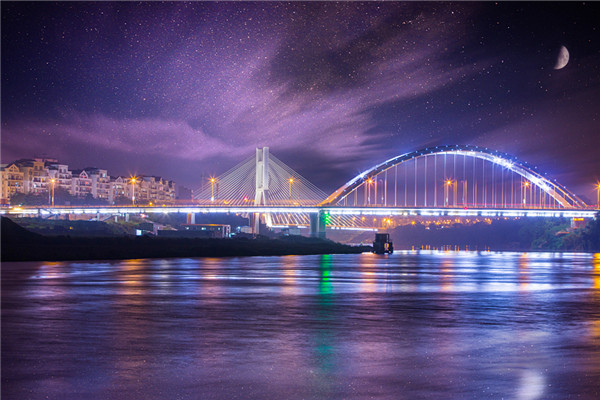Baise
Baise is located in the west of Guangxi, bordering Guizhou to the north, Yunnan to the west and Vietnam to the south. Baise became a prefecture-level city in 2002. The city administers 135 townships (towns and streets) in 12 counties (cities, districts) with a total area of 36,300 square kilometers. Baise is the largest prefecture-level city in Guangxi's inland area. It is the national eco-aluminum industry demonstration base. It is also renowned as "China's Excellent Tourism City", "National Double Support Model City", "National Garden City" and "National Health City". Baise is an ancient revolutionary area, an area with many ethnic minorities, a border area, a poverty-stricken area, a Dashi Mountain area and an area for immigrants from the Three Gorges reservoir.

Night scenery of Baise [Photo/VCG]
The city has seven ethnic groups including Zhuang, Han, Yao, Miao, Yi, Gelao and Hui. The minority population accounts for 87 percent of the total population.
Baise has unique advantages, remarkable development results and immense development potentials.
The first is its advantage of transportation due to its location. Baise is the throat of the sea channel in southwest China, an important bridge and base for communication between China and ASEAN, and an open gateway city for ASEAN. Baise is one of the 179 national highway transportation hub cities identified by the Ministry of Transport. The city has two national Level One ports, one national Level Two port and seven border trade points. Open platforms such as the China-Vietnam Cross-border Economic Cooperation Zone and the China-ASEAN Agricultural Products Free Trade Center have been included in the national construction plan. The three-dimensional traffic network of railways, highways, aviation, water transport and ports has also taken shape. Baise has become one of the more important node cities of the "Belt and Road Initiative" connecting to ASEAN.


